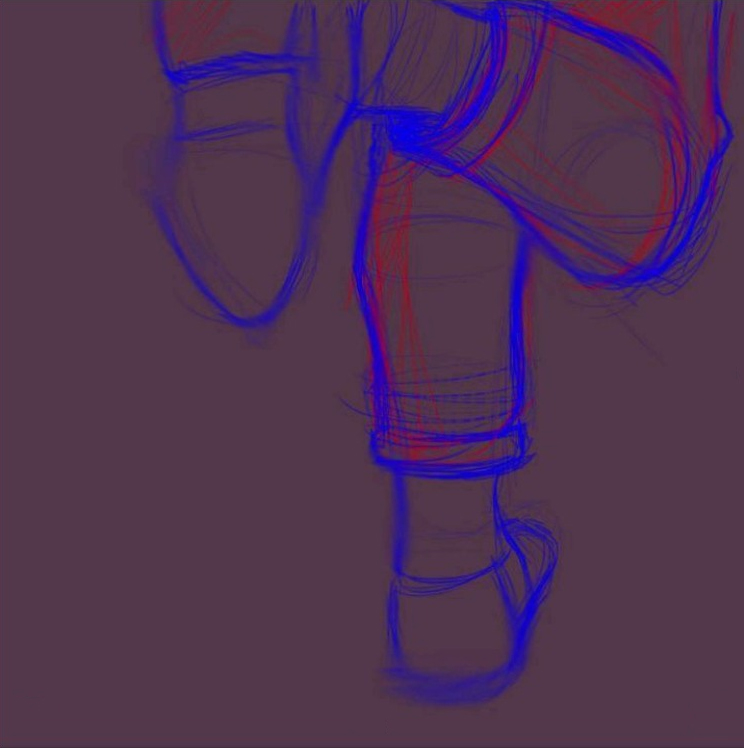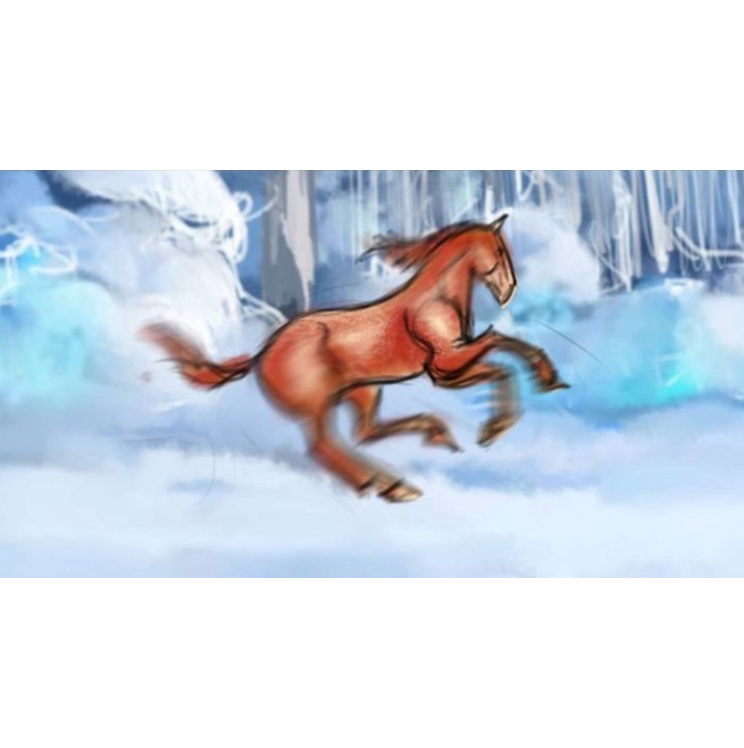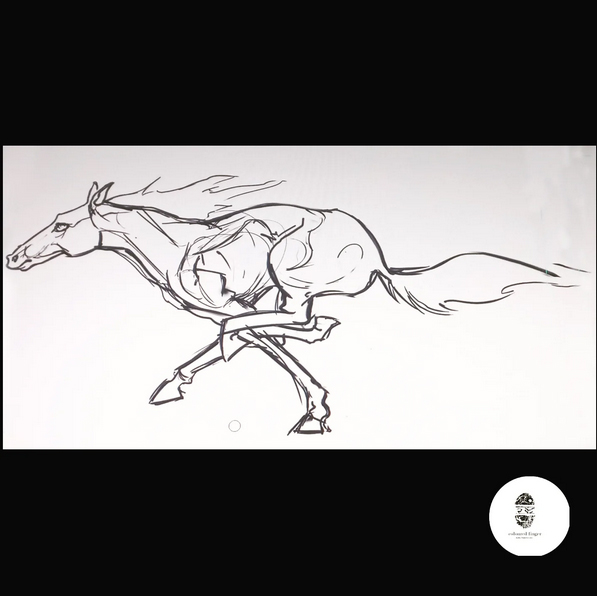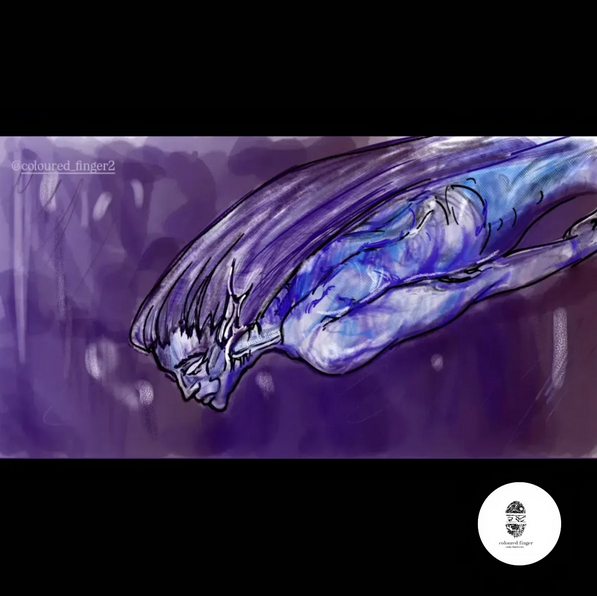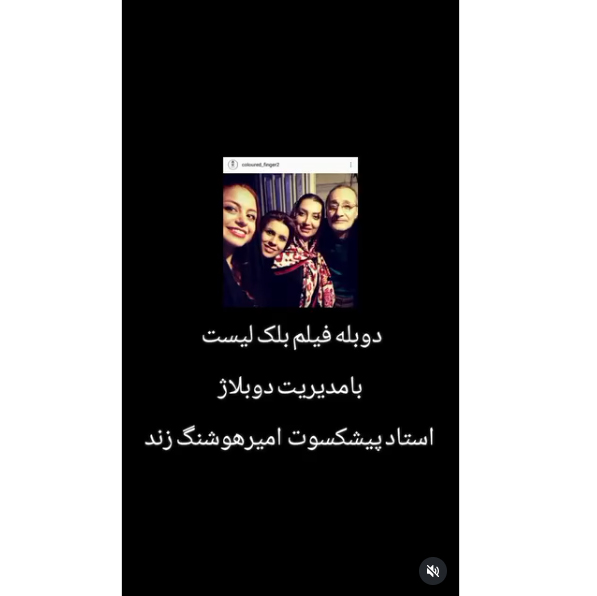
Biography
Azita Nasertorabi is a multidisciplinary artist and educator working in 2D animation and visual arts. With a master’s degree in Animation Directing and a background in illustration, she approaches movement and image with a poetic sense, where each frame becomes a moment of reflection and continuity of life.
Her works explore themes such as love, birth, and transformation, often moving between dream and reality in symbolic ways. Staying loyal to hand-drawn, frame-by-frame techniques, she focuses on the connection between touch and light, believing that real motion begins from stillness.
Nasertorabi has directed projects including Animation Poetry and Snail and Heron, and worked as designer and animator on the series Pahlevanan for Saba Company and IFA Tasvir. Alongside her creative practice, she has taught animation and mentored students at Azad University and Dr. Shariati Technical College.
For her, animation is a language that connects soul and image; a world where movement turns into poetry and image becomes a silent prayer.

Artist Statement
Sometimes, a single frame can hold a whole life inside it.
For me, animation is not just about movement, it is about finding meaning again. It allows me to show a world that once lived only in silence, somewhere deep inside the soul. A painful memory from my childhood left me with questions and confusion, but one day, while watching The Lion King, something changed. That moment gave me hope and showed me that images can heal, that art can bring life back to meaning. Since then, I have tried to build a world that lives between dream and reality.
My journey started with drawing, with simple lines that slowly turned into stories. In my work, love, birth, and transformation are not only personal subjects; they are human experiences we all share. I believe the soul has no gender, no limits; it is simply being. What people call the “female voice” in my work is, for me, the quiet voice of humanity, gentle, intuitive, and full of compassion.

My process feels more like writing poetry than making images. Each frame grows in its own rhythm, sometimes from a short sentence, a melody, or even a small feeling. Every line carries emotion; every motion becomes a word. Drawing frame by frame is my way to slow down the world, a way to breathe and feel life again. I see digital tools not as machines but as an extension of the hand, light shaped by touch.
When I create, I often look for the feelings behind poetry. I don’t try to copy the image of a poem but to paint what it makes me feel. That is why symbols and loops appear naturally in my animations; they come from emotion, not logic. My work always starts by hand, with sketches that later come to life through digital color and light. My Cintiq is special to me; it feels like a bridge between touch and light. The software I use, such as TVPaint, Toon Boom, Moho, After Effects, or Photoshop, are only tools; what truly matters is the feeling they carry.
I have been inspired by poets and filmmakers like Nima Yooshij, Ahmad Shamloo, Milan Kundera, Abbas Kiarostami, Michaël Dudok de Wit, Hayao Miyazaki, and Walt Disney, all of whom taught me that beauty comes from simplicity, and silence can say more than words.
For me, animation is a world of its own, a place where dream and reality meet, where motion becomes poetry, and image becomes prayer. In every frame, I try to find that hidden pulse of life, the same quiet light that once guided me to begin this journey.
Gallery
Animate
Trailer and Editing
Design
Concept
Education
Animation review
double
Interview with Azita Naser Torabi
In the works of Azita Nasertorabi, concepts such as love, birth, and transformation are central to her artistic vision. She believes that these ideas do not only come from her personal experiences, but also from a desire to see the world through the eyes of humanity. Nasertorabi sees art as something that goes beyond gender, color, ethnicity, and geography. For her, it comes from a deep source where love and creation are one. She describes poetry and image as sacred forms, born from an inner spark that all humans share. Every artwork, she says, should remind us of this connection and bring a small but honest change in the relationship between human beings and the world. As she beautifully puts it, “Art must awaken the world, even if only for a single frame.”
In this conversation, Nasertorabi speaks about the relationship between poetry and animation, describing each frame as a “short poem.” For her, every image carries a spirit of meaning and emotion, and the creative process feels more like writing poetry than doing a technical project. She explains that during the process, the rhythm of the work slowly writes itself, and the movement finds its meaning and music along the way. To her, animation is a kind of meditation , a search for meaning through motion, and a way to hear the music of emotion within the silence of the image.
She also explains her conscious choice to work with 2D and frame-by-frame techniques. Although slower, she believes this method has a soul, born from the direct contact between the hand, the mind, and the image. In a world that values speed and productivity, she finds beauty in slowing down and touching life through each movement. For her, 2D animation carries a sense of delicacy, reflection, and presence , where meaning grows through patience and stillness.
Nasertorabi also talks about the idea of the “female voice” in her animations. She explains that this voice is not about gender, but about a human essence that exists within everyone. “The soul,” she says, “is neither woman nor man, but simply being , pure, free, and rooted in a shared origin.” While she respects feminist movements and ideas of equality, she believes that true humanity exists beyond dualities. The “female voice” in her work is the voice of softness, intuition, love, and deep understanding , qualities that belong to the soul, not the body.
Later in the conversation, she speaks about the role of teaching and research in her artistic journey, describing these three areas , art, research, and education, as parts of the same breath. Teaching, for her, is not only about sharing skills, but about understanding herself and others more deeply. She believes that creating, teaching, and learning are all connected, and each keeps the other alive. “My students,” she says, “are like living characters in an animation. Each one has a world of their own, and I must enter it with respect.” For her, teaching is a way to expand the world of animation and to share a small light that might one day shine in someone’s mind.
At the end of the conversation, when asked about her artistic future, she said a short but powerful sentence:
“I want to reveal, frame by frame, the world that once could only be seen in the silence of the soul.”

